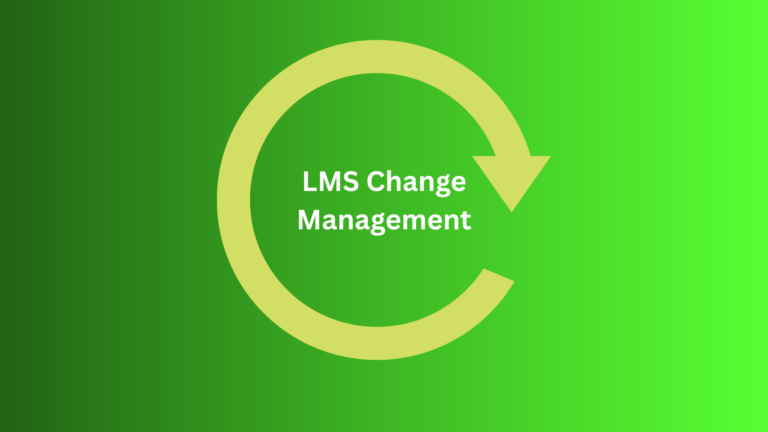In today’s fast-paced world, everyone is looking for ways to learn faster, retain information better, and apply knowledge more efficiently. One way to achieve this is through microlearning, a learning approach that involves delivering content in small, focused chunks that you can easily consume and remember.
Microlearning has become increasingly popular in recent years, as it offers a flexible, self-paced way to learn. In this article, we’ll explore the benefits of microlearning and provide some tips on how to create effective, self-paced microlearning that users can use to serve themselves.

What is microlearning?
Microlearning is a learning approach that involves delivering content in small, focused chunks that you can easily consume and remember. It is a way of breaking down complex topics into bite-sized pieces of information that you can absorb quickly and easily.
Microlearning can take many forms, such as short videos, interactive quizzes, infographics, and podcasts, among others. The key is that each piece of content is designed to be short, focused, and easy to digest.
Benefits of microlearning
Microlearning offers several benefits over traditional forms of learning. Here are some of the key advantages:
- Flexibility: You can access the resources at any time and from anywhere, making it ideal for learners who need flexibility in their schedules.
- Customization: You can tailor-make the courses as per the needs of individual learners, allowing them to focus on the topics that are most relevant to them.
- Retention: You can deliver courses in small chunks so the learners are more likely to retain the information they learn.
- Engagement: You can make it interactive and engaging, which can help learners stay motivated and interested in the content.
- Cost-effective: Microlearning is often less expensive to create and deliver than traditional forms of learning, making it a cost-effective solution for organizations.
Creating self-paced microlearning
Creating effective self-paced micro-learning requires careful planning and execution. Here are some tips to help you create high-quality microlearning that users can use to self-serve:
- Identify learning objectives: Before you start creating your microlearning, it’s essential to identify your learning objectives. What do you want your learners to achieve? What skills or knowledge do they need to acquire? By setting clear learning objectives, you can ensure that your microlearning is focused and relevant to your learners’ needs.
- Keep it short and focused: The whole point of microlearning is to deliver information in small, easily digestible chunks. As such, it’s essential to keep your microlearning short and focused. Aim for a length of 5-10 minutes or less. Also, each piece of content should focus on a specific topic or skill.
- Use multimedia: Microlearning is most effective when it includes multimedia elements such as videos, images, and audio. These elements can help to engage learners and make the content more memorable.
- Make it interactive: Interactive elements such as quizzes, games, and simulations can help to keep learners engaged and motivated. By including interactive elements in your microlearning, you can create a more immersive learning experience.
- Provide feedback: Learners need feedback to know if they are on the right track. Providing feedback on their progress can help to keep them motivated and focused on their learning goals.
- Test and iterate: Like any form of learning, microlearning requires testing and iteration to ensure its effectiveness. Test your microlearning with a small group of learners before launching it more widely. Use feedback from learners to make improvements and refine the content.
What are the benefits of self-paced micro-learning?
- Flexibility: You can consume the resources at any time and from anywhere, making it ideal for learners who need flexibility in their schedules. Learners can choose when and where to complete the microlearning, which can help them fit their learning around their busy lives.
- Customization: You can tailor the courses as well to the needs of individual learners, allowing them to focus on the topics that are most relevant to them. This can help to improve engagement and motivation, as learners feel that the content is relevant to their needs.
- Retention: You can deliver self-paced microlearning in small, focused chunks so learners can retain the information they learn. This is because the brain is better able to process and remember information when it is presented in a structured and manageable way.
- Time-efficient: It is quick learning, with most modules taking between 5-10 minutes to complete. This means that learners can acquire new knowledge or skills in a short amount of time, which can be useful for busy professionals.
- Cost-effective: Self-paced microlearning is often less expensive to create and deliver than traditional forms of learning. This is because it requires fewer resources to create and distributes online. It reduces the need for physical training materials and instructors.
- Personalization: We can also personalize it to the needs of individual learners. It will allow them to learn at their own pace and focus on the areas where they need the most help. This can help to improve engagement and motivation, as learners feel that the content is tailored to their specific needs.
- Accessible: We can access Self-paced microlearning from anywhere with an internet connection. This makes it accessible to learners in remote locations or those who have limited access to training resources. This can help to ensure that all learners have access to high-quality training, regardless of their location or circumstances.
Let’s wrap it up
Microlearning is an effective way to deliver information in small, easily digestible chunks that the audience can consume at any time and from anywhere. By creating self-paced micro-learning programs, organizations can empower their employees to take control of their learning and development, which can lead to improved performance and job satisfaction.
With LMS, you can deliver these micro-courses more interactively and engagingly. You can make use of features such as gamification, live chat, live streaming, etc.



